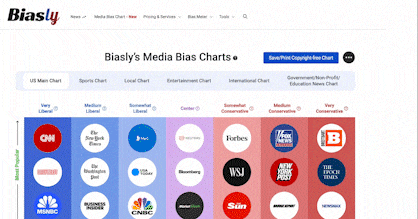
The misinformation ecosystem refers to all of the sources, individuals, and events that play a role in spreading misinformation. Each part of it has fooled people into believing false information. Also, not everyone is adept at recognizing misinformation. This is demonstrated by the chart below:

Source: Pew Research
A significant number of individuals lack confidence in their ability to authenticate COVID-19 information. Given the ambiguity surrounding COVID-19 data, many are also unsure about the credibility of information on other subjects.
It is therefore crucial to pinpoint various elements of this ecosystem and understand how they can mislead people. With this knowledge, we can anticipate when to expect misinformation. Additionally, we should be mindful of the negative impact false information can have on our society.
Understanding the potential adverse effects of believing in misinformation can motivate us to be more vigilant in identifying it. This article will explore different facets of the misinformation ecosystem, including social media’s handling of misinformation, content creators, and public reactions to online content. We will also delve into the damaging effects of misinformation on society, encompassing health repercussions and fostering distrust among individuals.
Social Media’s Treatment of Misinformation
One piece of the misinformation ecosystem is social media’s relaxed treatment of misinformation. Many social media sites do not make the effort to combat misinformation on their platforms or discipline the users who spread this misinformation.
An example of this is the issue regarding Jair Bolsonaro’s YouTube videos about COVID-19, which is explained in It-which-must-not-be-named: COVID-19 misinformation, tactics to profit from it and to evade content moderation on YouTube:
“…Brazilian President Jair Bolsonaro promoted Hydroxychloroquine and Ivermectin to treat and prevent COVID-19, minimized the pandemic risks, amplified conspiracy theories, and attacked COVID-19 vaccines…YouTube Community Guidelines define the concept of a strike:…If a channel receives three strikes in 90 days, it is permanently removed from the platform (YouTube Help, 2022). However, Bolsonaro’s channel received five strikes in 1 week of April 2021, and remained online.”
By spreading misinformation about COVID-19, President Bolsonaro violated YouTube’s rules more than enough times to be banned from the site. However, YouTube did not ban his channel. This lack of initiative on behalf of YouTube, and other social media platforms, permits misinformation to spread further. After all, if misleading content is not removed from these platforms, then more people will access and believe them.
Content Creators as a Source of Misinformation
Another aspect of the misinformation ecosystem is content creators. As mentioned before, some content creators are the ones who spread misinformation online.
- They misinform for profit.
- They misinform because they do not fact-check their content
- They are notably good at misinforming because people trust them more
There are several reasons why content creators misinform their audiences. For example, they might do this for profit. Yin describes this issue in From Virality to Engagement: Examining the Transformative Impact of Social Media, Short Video Platforms, and Live Streaming on Information Dissemination and Audience Behavior in the Digital Age:
“Monetisation has emerged as the foundation of the creator economy: it dictates how content is created, consumed, and disseminated. Sponsorships, subscriptions, crowdfunding, and merchandise sales encourage creators to prioritize content that drives interest. But financial sustainability inevitably forces designers to play along with platform algorithmic constraints, creating the opportunity for formulaic or clickbait content.”
People may produce misleading content to increase audience engagement, and therefore earn more money. They can use titles and information that grab a lot of people’s attention, even if they are not true.
Content creators also misinform because they are not fact-checking their content. UN News’s 2/3 of digital content creators do not fact-check, UNESCO survey reveals describes how they determine the reliability of information they use in their content:
“The survey uncovered trends in how creators assess information credibility including 42 percent who use social media metrics like ‘likes’ and ‘shares’ as primary credibility markers, while 21 percent of respondents share content based solely on ‘trust in friends’ who shared it.”
A creator will likely use the wrong criteria for judging the reliability of information–how popular it is, and how much they trust the person who shared the information with them. Instead, they should research to figure out if the information is confirmed by official or scholarly sources.
Lastly, it should be known that content creators are particularly effective when they misinform. In Influencers ‘Promising Avenue’ in misinformation spread, Muenster explains this by stating:
“Another important aspect that makes influencers promising tools in spreading disinformation is that users trust the faces and voices they follow. Followers often spend hours listening to or watching their favorite influencers, forming parasocial relationships and building trust akin to a friend.”
If someone enjoys watching or hearing from a certain content creator, then that creator will be important to the person, and the person will perceive the creator as a friend. Consequently, they will see that creator as trustworthy, even though their content is not verified.
Reactions to Online Content
A third part of the misinformation ecosystem is people’s reactions to online content. For instance, people may interpret content with a confirmation bias. Beauvais defines this in Fake News: Why do we believe it?:
“…confirmation bias…induces individuals to seek or interpret evidence in ways that are concordant with their existing beliefs, expectations, or a hypothesis in hand. In the political spectrum, this bias may explain why people show less discernment toward fake news issued from their political camp: political affiliation influences their beliefs on which news sources are ‘fake.’”
Confirmation bias causes people to be less critical of political news stories that support their views, and therefore be less aware of the misinformation that appears in these stories.
People’s emotional responses to content also contribute to misinformation. In the American Psychological Association’s How and Why Does Misinformation Spread?, it is described how “People are more likely to share misinformation…when it elicits strong emotions…Algorithms that track user engagement to prioritize what is shown tend to favor content that spurs negative emotions like anger and outrage.”
If a news story evokes more emotions in readers, then the story will spread further online, regardless of whether or not it is trustworthy. As mentioned before, this increased spread will cause more people to encounter and fully believe a story, without acknowledging its media bias or misinformation.
The Impact of Misinformation on Society
Now that we have observed several sources of misinformation online, it is important to acknowledge its impacts on society.
One of these effects is poorer health. For example, in Online misinformation is linked to early COVID-19 vaccination hesitancy and refusal, it is found that “…exposure to online misinformation can increase vaccine hesitancy.” Misinformation about medical treatment, such as vaccines, can drive people to avoid it. This is because there are false claims that treatment is harmful. The same article recalls that “In the COVID-19 pandemic scenario, widely shared misinformation includes false claims that vaccines genetically manipulate the population or contain microchips that interact with 5G networks.”
It has also been proven that the real harm is avoiding medical care. The article describes, “In early July 2021, increased rates of the highly transmissible SARS-CoV-2 Delta variant were recorded in several poorly vaccinated U.S. states.” Refusing COVID-19 vaccines has resulted in a higher risk of infection. As noted before, it was misinformation that played a role in motivating people to reject these vaccines.
Another effect of misinformation is more distrust in society. One occurrence of this is a lack of trust in the media. According to Tubbs’s ‘FAKE NEWS,’ DIMINISHING MEDIA TRUST AND THE ROLE OF SOCIAL MEDIA:
“…in sub-Saharan Africa — where disinformation campaigns have been used recently to influence electoral campaigns — perceived exposure to disinformation is high and trust in national media and social media is low…90% of Kenyans, 93% of Nigerians and 76% of South Africans believe they are exposed to false news about politics on a fairly regular basis.”
Misinformation is a significant problem in sub-Saharan Africa. As a consequence, many sub-Saharan Africans believe that the news they encounter is unreliable.
The misinformation ecosystem has become a widespread problem. Everyone is bound to encounter it, and many have been fooled by it. So, we need to know about the different forms it can take, such as social media’s treatment of misinformation, content creators, and reactions to online content. There is also an important reason why we should learn this, which is because misinformation has different ways of hurting society; it can cause poor health and diminish people’s trust in each other.























